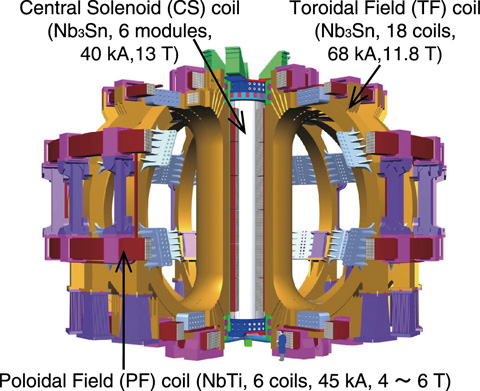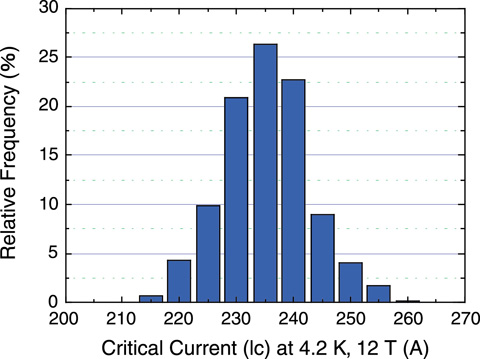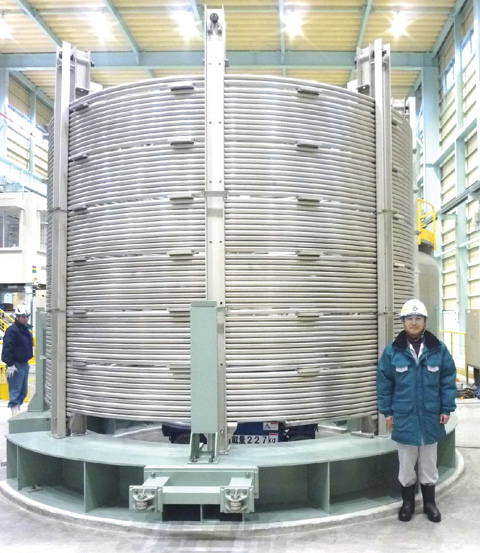
Fig.4-2 ITER superconducting coil system

Fig.4-3 Structure of TF coils and their superconductor

Fig.4-4 Histogram of critical current (Ic) of mass-produced strands

Fig.4-5 Completed superconductor with a length of 760 m
To confine and control a very high-temperature plasma, the ITER device being constructed by Japan, China, the EU, India, Korea, Russia and the US, will have the maximum magnetic field of 10 T. Huge superconducting coils are necessary to achieve such a high magnetic field (Fig.4-2). The height, width and weight of a Toroidal Field (TF) coil, which generates the magnetic field, are 14 m, 9 m and about 300 tons, respectively (Fig.4-3). Japan is producing nine TF coils and 25% of all TF superconductors, and is the first of all ITER countries to begin manufacturing the TF conductors.
A circular superconducting cable, consisting of around 1,000 superconducting Nb3Sn strands, is inserted into a circular stainless steel jacket. The jacket is composed of tubes, each 13 m in length, that are butt-welded with an automatic welding machine to create a continuous 780 m long jacket. Following cable insertion, the jacket is compacted in a single step to the specified diameter (43.7 mm). The conductor is manufactured under a high-level quality assurance plan according to the ISO standard. From experience, it is known that if the fabrication processes are not tightly monitored and controlled, the performance of superconducting strands can widely vary. Therefore, Statistical Process Control (SPC) is applied during strand fabrication to monitor all key parameters including Ic, hysteresis loss, residual resistance ratio and outer diameter. This monitoring allows us to detect, at an early stage, any problems in the manufacturing process and any deviations of parameters from design specifications. The Ic values of manufactured strands show a Gaussian distribution, as shown in Fig.4-4. The standard deviation of the distribution is 6.7 A, which is around 3% of the average value (233 A). This result indicates that the quality assurance plan using SPC is very useful for the manufacture. The completed TF conductor is shown in Fig.4-5. We are manufacturing conductors at the rate of approximately one conductor per month. We have completed 26 conductors, which corresponds to about 80% of the Japanese share. In other ITER countries, they have just started conductor fabrication, although some amount of Nb3Sn strands has been manufactured. Japan is leading the way as the first ITER country to provide TF conductors according to the highest ISO standards.
<Previous: 4 Nuclear Fusion Research and Development | Next: 4-2 >